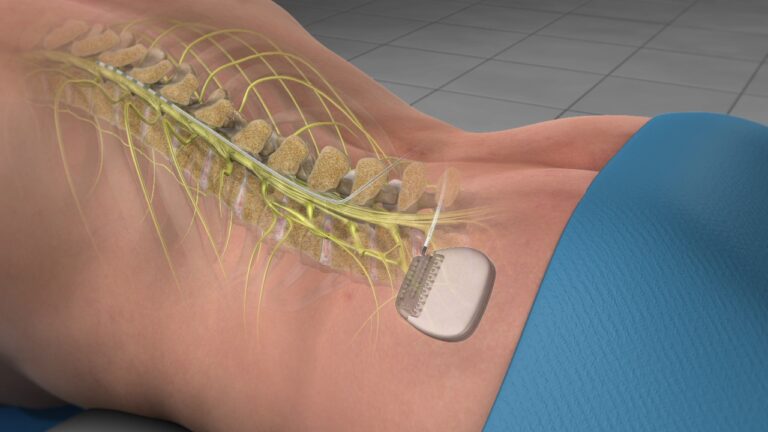
Pain affects millions of people worldwide, limiting their ability to work, sleep, and enjoy life. In 2025, science is reshaping how we understand, assess, and treat pain. From non-opioid drugs and AI-powered diagnostics to gene therapy and mindfulness-based approaches, new pain management strategies offer safer and more personalized care than ever before.
Let’s explore the most promising advances in pain management this year.
Revolutionary Non-Opioid Medications
Suzetrigine (Journavx): A Major Breakthrough
One of the biggest developments in 2025 is the FDA approval of Suzetrigine, sold under the brand name Journavx. Unlike opioids, this drug does not cause sedation, addiction, or respiratory depression.
Suzetrigine works by selectively blocking NaV1.8 sodium channels, which are responsible for transmitting pain signals. In clinical trials, it was as effective as hydrocodone-acetaminophen in controlling post-surgical pain—without the risks associated with opioids.
Other Promising Drug Candidates
- SBI-810: This non-opioid compound prevents pain without affecting motor functions or causing sedation. It’s expected to move into human trials soon.
- PP353: An injectable drug that targets infection-related back pain. In initial studies, over 60% of patients reported lasting relief.
Regenerative Medicine and Gene Therapy
Stem Cell Therapy and PRP
Regenerative techniques like mesenchymal stem cells (MSCs) and platelet-rich plasma (PRP) are increasingly being used to treat musculoskeletal pain, osteoarthritis, and tendon injuries. These therapies reduce inflammation and help repair damaged tissues naturally.
Gene Editing and Delivery
Scientists are now experimenting with delivering anti-inflammatory genes like IL-10 directly to pain sites. Tools like CRISPR, RNA interference (RNAi), and viral vectors are being tested for targeted, long-term pain relief—especially in chronic pain conditions.
Smart Technology and Artificial Intelligence
AI-Powered Pain Detection
Machine learning tools like PainFormer and PainDECOG can now detect pain levels using EEG, video, and physiological signals. These models offer a more objective way to assess pain in real time, especially in patients who struggle to communicate their discomfort.
Wearables and Remote Monitoring
Wearable technology is now being used to monitor posture, muscle tension, and movement, helping patients manage their pain proactively. These devices, when connected to apps, allow therapists and doctors to adjust treatment plans remotely.
Mind–Body Approaches and Digital Therapy
Cognitive Functional Therapy (CFT)
This behavioral approach retrains the brain’s reaction to pain. It involves guided movements, fear reduction, and lifestyle coaching. A 2025 study showed that CFT helps reduce chronic back pain, improves daily function, and reduces reliance on painkillers.
Mindfulness-Oriented Recovery Enhancement (MORE)
MORE combines mindfulness, cognitive reappraisal, and savoring techniques. Clinical trials have shown it effectively reduces chronic pain and the misuse of opioid medications.
Online Pain Reprocessing Programs
Programs like Personal Danger Signals Reprocessing (PDSR) are showing promising results in helping people reframe how their brain interprets pain. Delivered online in groups, these sessions have led to measurable reductions in pain, depression, and anxiety.
Low-Dose Radiation Therapy (LDRT)
Traditionally used in Europe, Low-Dose Radiation Therapy is gaining attention in the U.S. for managing chronic joint pain and inflammation. For conditions like arthritis and tendinitis, LDRT has been effective in 60–80% of elderly patients, with minimal long-term risk.
It is a non-invasive option for those who cannot undergo surgery or tolerate medications.
Comparison Table of 2025 Pain Management Innovations
| Innovation Area | Example | Key Benefit |
|---|---|---|
| Non-Opioid Medications | Suzetrigine, SBI-810 | Effective pain relief without addiction risk |
| Regenerative Medicine | Stem cells, PRP | Repairs tissues and reduces inflammation |
| Gene Therapy | IL-10 delivery, CRISPR | Long-lasting pain control at the molecular level |
| Artificial Intelligence | PainFormer, PainDECOG | Objective, real-time pain assessment |
| Behavioral Approaches | CFT, MORE, PDSR | Rewires brain’s response to pain, reduces fear |
| Low-Dose Radiation Therapy | LDRT | Non-invasive relief for arthritis and inflammation |
Conclusion
The field of pain management is undergoing a powerful transformation in 2025. We are moving away from heavy reliance on opioids and toward a multimodal, science-driven approach. With advances in non-opioid drugs, regenerative therapies, gene-based treatments, and smart technologies, the future of pain relief is more personalized, safer, and effective than ever before.
As always, patients should consult a qualified healthcare provider to determine which options are right for their specific condition.
Frequently Asked Questions
1. Is suzetrigine safe to use instead of opioids?
Yes, suzetrigine has shown opioid-level pain relief in trials without causing sedation, addiction, or respiratory depression.
2. Are stem cell treatments FDA-approved?
Some stem cell therapies are under clinical trials. Always consult with a licensed specialist and check FDA approval status.
3. Can AI really detect pain accurately?
New AI models are showing high accuracy in detecting pain patterns, especially in non-verbal or unconscious patients.
4. What is Cognitive Functional Therapy (CFT)?
CFT helps retrain the brain’s response to movement and pain through guided physical and psychological strategies.
5. Is low-dose radiation safe for long-term use?
In select patients, especially older adults, LDRT is considered safe and effective when administered under expert guidance.





